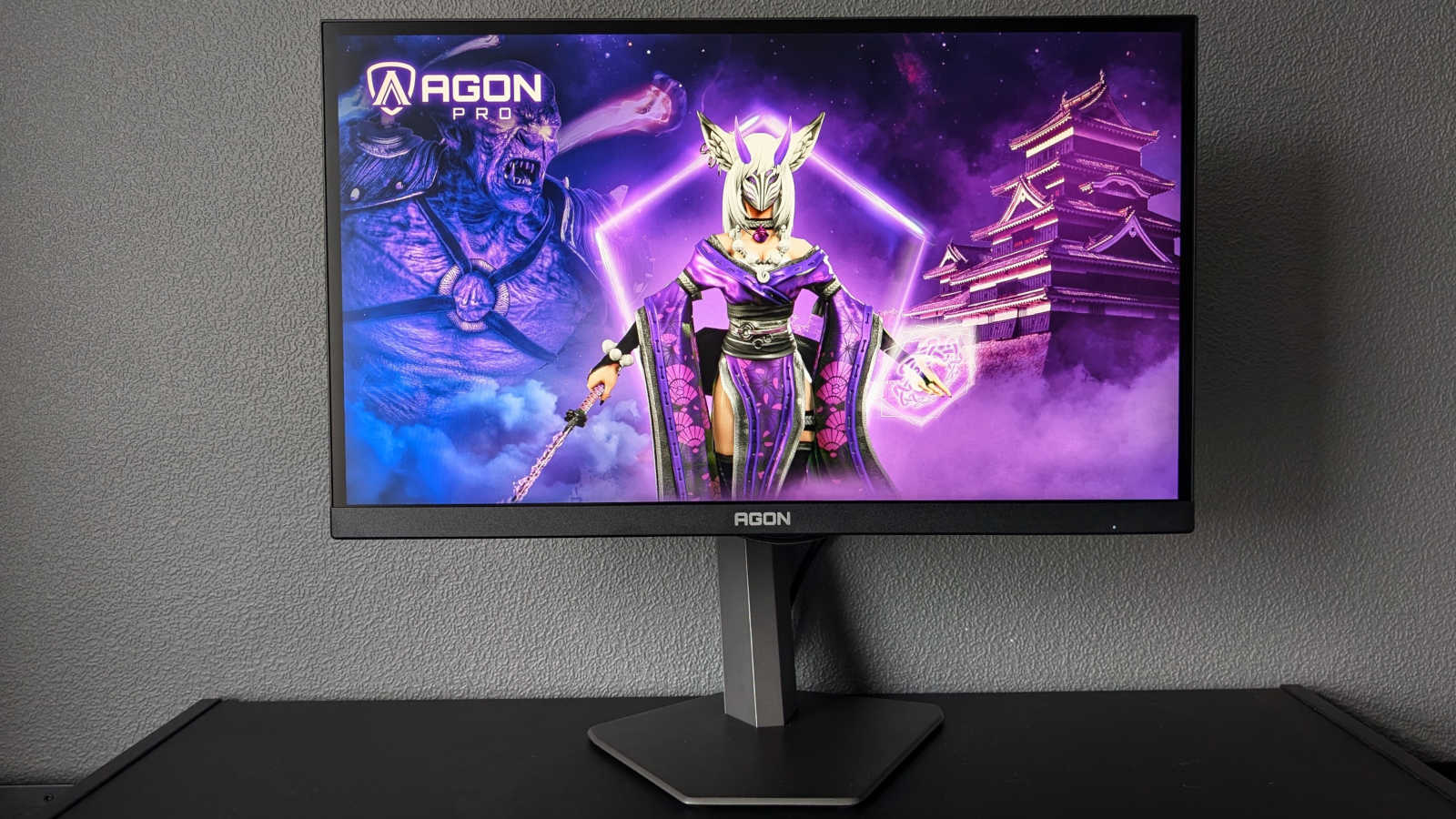We’ve come a long way from the bulky CRT boxes sitting atop a beige PC tower. In fact, monitors are so thin these days that it’s difficult to believe they’re as good as they are, but it all comes down to incredible innovations across different panel types.
Advancements have naturally led to a lot of choices, with multiple panels technologies vying for attention in a crowded market. None are perfect, each with its own strengths, weaknesses, and ideal use cases. Whether you’re in the market for a budget TN, colour-popping IPS, or inky-black OLED, here’s everything you need to know about the screens in your setup.
TN (Twisted Nematic)
Pros
- Most affordable
- Fast response times
- Low input lag
- High refresh rates
- Power efficient
Cons
- Poor viewing angles
- Lower colour accuracy
- Lower contrast ratios
Club386 may earn an affiliate commission when you purchase products through links on our site.
How we test and review products.
TN (Twisted Nematic) is the oldest panel still featured in modern monitors, using LCD (liquid crystal display) technology that bends to allow light through. Given their simplicity, these are cheaper to make and often the first to see progress as faster refresh rates become available.
Often the swiftest options on the market, they’re the favourite among esports players for their competitive advantage, featuring low response times and high refresh rates. Currently, the fastest gaming monitors range up to 540Hz on a 24.5in panel, like AOC Agon Pro AG246FK.
Just keep in mind that sheer speed comes with a few trade-offs, which other similarly speedy panels don’t have. Colour accuracy takes a hit, particularly when factoring in narrow viewing angles warping your perspective. Contrast ratios are also among the worst available.
Still, affordability does wonders for TN, whether you’re filling the office full of brightly lit displays that can combat encroaching sunlight or grabbing a secondary screen for ancillary tasks without breaking the bank.
VA (Vertical Alignment)
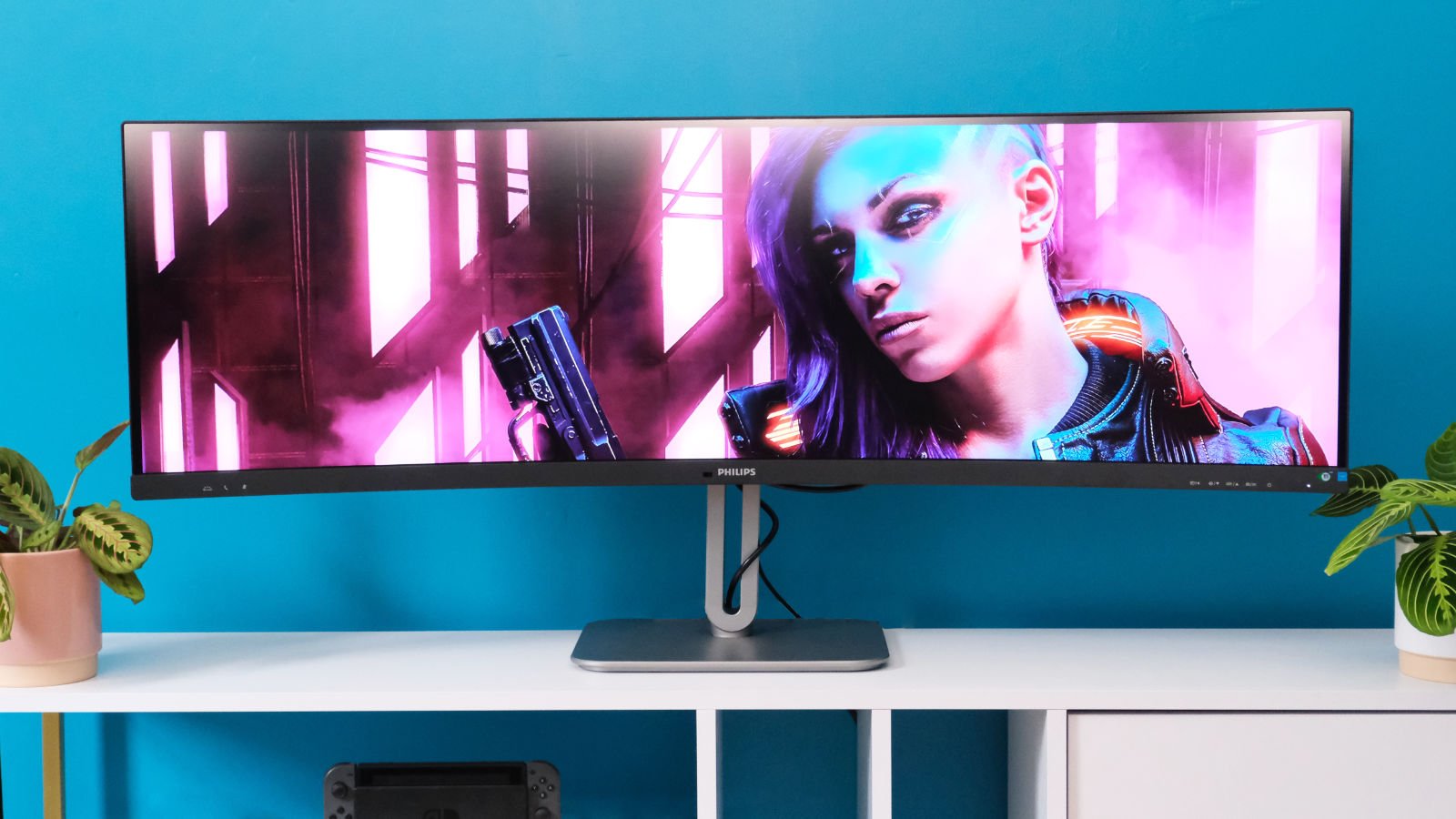
Pros
- Higher contrast ratio
- Deep blacks
- Rich colours
- Best value for curved options
- Best budget HDR experience
Cons
- Slower response times
- Prone to ghosting (except Fast VA)
- Narrower viewing angles
Club386 may earn an affiliate commission when you purchase products through links on our site.
How we test and review products.
Something of a jack of all trades, VA (Vertical Alignment) panels cater to any scenario you throw at them but don’t particularly master any one area. Although it boasts richer colours than TN, it never quite hits the same heights as IPS in these categories. This is largely because narrower viewing angles cause gamma shifts, altering your perception of the presented colours.
That said, it does feature the highest contrast ratio of the three basic backlit models, only beaten by the near-infinite range on OLEDs. Whereas IPS and TN sit around 1,000:1, VA ranges up to 4,000:1 and beyond on its top models. These deep blacks help lean into HDR (high-dynamic range) content, making it the most popular choice for LED TVs.
Its biggest weakness is slower response times. Despite a similar 5ms grey-to-grey (GtG) response as other models, VA comes with slower black-to-white pixel transitions. This results in ghosting and muddy visuals when dealing with faster movements, making it less popular for competitive gaming. Newer models, such as Fast VA, feature quicker response times that combat these issues. They don’t match the motion clarity of Fast IPS but simultaneously aren’t bogged down by the threat of backlight bleed, which disproportionately affects IPS ultrawides.
While VA panels aren’t the only curved monitors on the market, they offer the most value for money by lowering the entry price. Alongside enhancing immersion, bending the monitor to the shape of your eye reduces strain and fatigue to keep you working or playing for longer. As prices continue to fall for faster specs, it’s just a question of hunting for the right model.
IPS (In-Plane Switching)
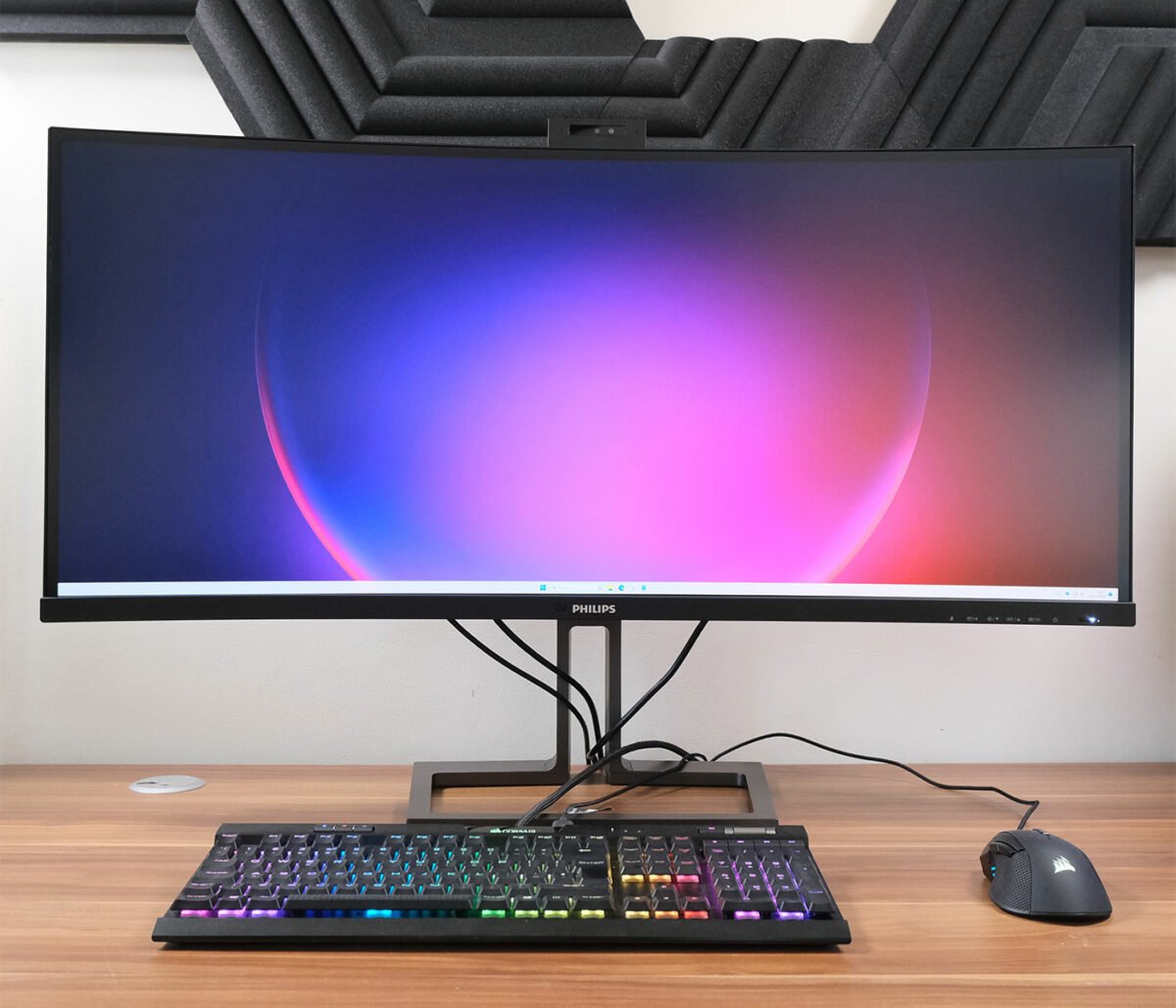
Pros
- Accurate colour reproduction
- Colour consistency
- Wide viewing angles
- Strong response times
- Outstanding for productivity
Cons
- Lower contrast ratios
- Higher price on higher specs
- Susceptible to backlight bleed
Club386 may earn an affiliate commission when you purchase products through links on our site.
How we test and review products.
IPS panels align their liquid crystals in parallel to the display plane (hence “in-plane”). Unlike TN, where liquid crystals twist vertically, IPS crystals stay aligned and rotate horizontally when voltage is applied.
This technique grants it a reputation for superior colour and wide viewing angles, making IPS the go-to for professionals who need to edit photos and videos with the utmost accuracy. You can peer at one from 178° and should still see the same colours and characteristics as when you view it head-on.
Arranging liquid crystals in such a way emphasises the need for good build quality, as the backlight needs to be consistent to illuminate the screen. Any flaw in the process results in what’s known as ‘backlight bleed,’ with a blooming effect around the edges and inconsistent contrast ratios where blacks appear grey.
Whereas IPS tends to be more expensive than TN or VA, it has largely fallen in price to make way for newer panel technologies. Better specs still require a premium, but you can get higher refresh rates and great response times primed and ready for games at about half the price of OLED and Mini LED.
Mini LED
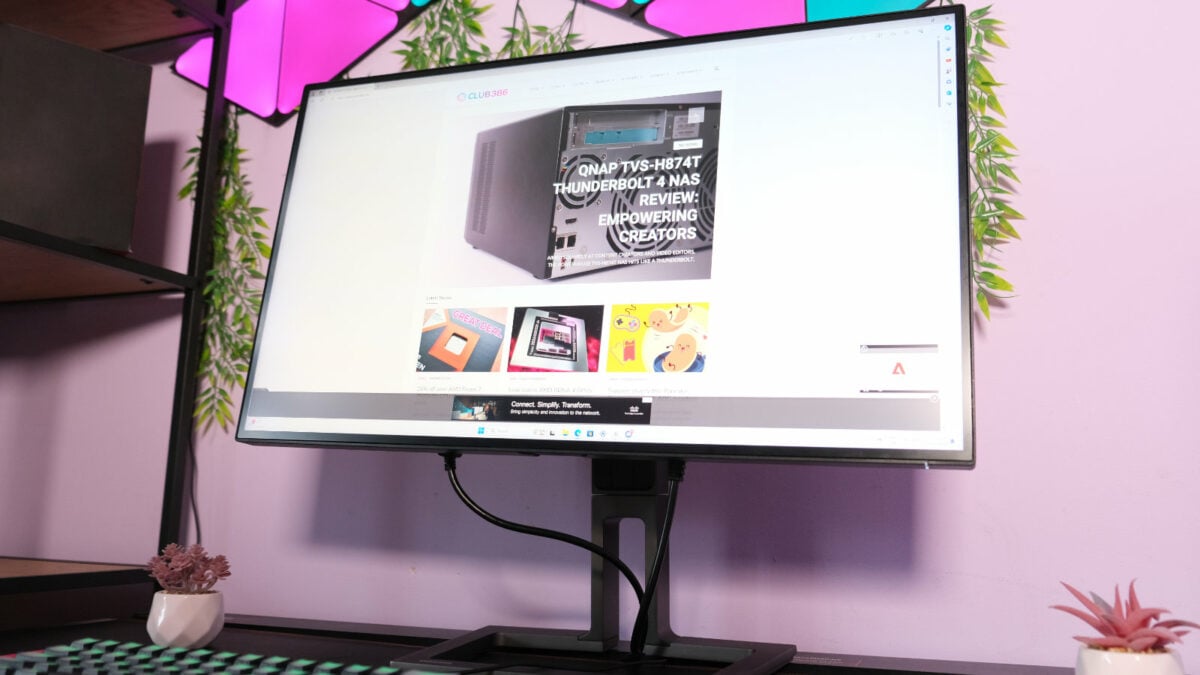
Pros
- Great contrast
- More dimming zones
- High peak brightness
- Wide colour gamut
- Less risk of burn-in
Cons
- Prone to halo effect
- Costly
- Lack of variety in specs
Club386 may earn an affiliate commission when you purchase products through links on our site.
How we test and review products.
Contrary to popular belief, Mini LED isn’t actually a panel type. It’s an advanced backlighting technology often paired with LCD (usually IPS or VA). Using thousands of tiny LEDs between 50 and 100 times smaller than those on other models, it creates local dimming zones for more precise lighting control.
Considered a step above LED but behind OLED, it doesn’t quite achieve the same colours or response times as the latter but comes staggeringly close without the risk of burn-in. It’s also far brighter than any other panel, which is perfect for professionals focusing on HDR workflows or those who battle with sunlight creeping in through windows.
Mini LED’s Achilles’ Heel is the halo effect, where brighter objects sometimes glow slightly against dark backgrounds. More local dimming zones minimise this, alongside providing greater contrast and deeper blacks, but in turn, drive up the price and power consumption.
Currently, Mini LED has limited availability due to high manufacturing costs, which reduces the extent of specs you can choose from. As these fall, you should see more flood the market, providing a less risky alternative to our beloved OLEDs.
OLED (Organic Light-Emitting Diode)
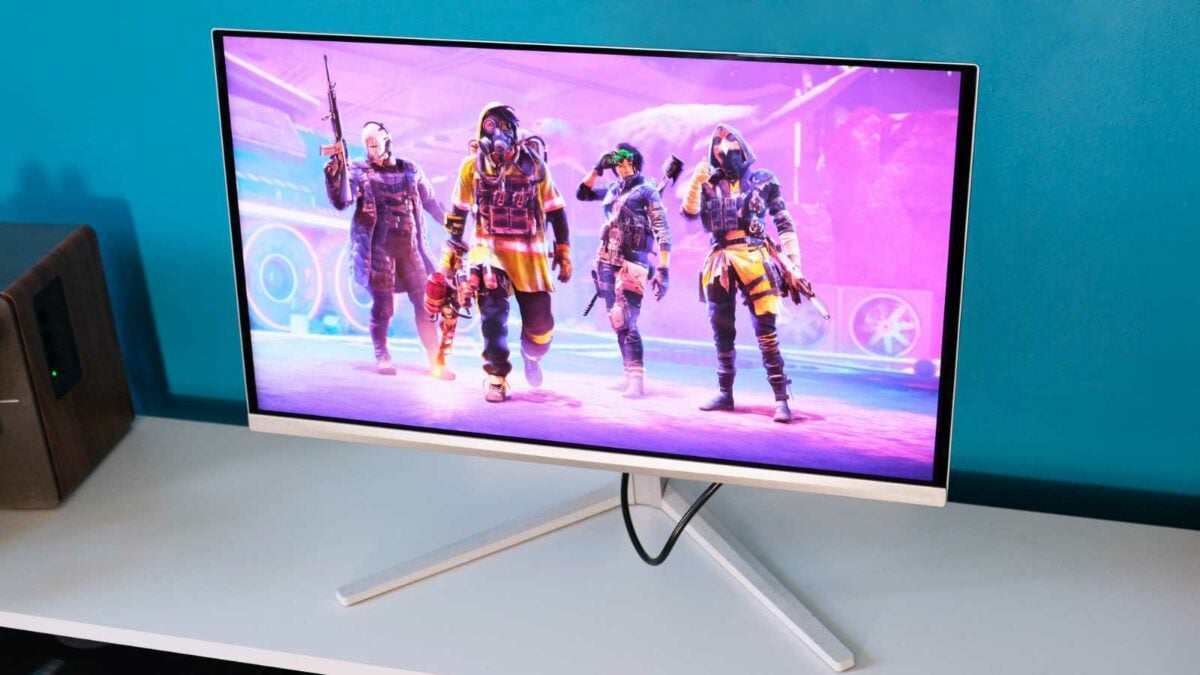
Pros
- Near-infinite contrast ratio
- Excellent HDR performance
- Wide viewing angles
- Fastest response times
- Fantastic colour accuracy
Cons
- Risk of burn-in
- Lowest brightness
- Relatively high prices
Club386 may earn an affiliate commission when you purchase products through links on our site.
How we test and review products.
Unlike traditional LCDs, OLED (Organic Light-Emitting Diode) does not rely on a backlight. Each individual pixel emits its own light, allowing for true blacks and contrast ratios that are second to none.
As far as the viewing experience goes, OLED is generally considered the best you can get for movies and gaming, thanks to exceptional colour accuracy and unbeaten response times at 0.03ms GtG. It’s also rapidly catching up to IPS in terms of available specs, ranging up to 1440p at 480Hz or 4K at 240Hz. Lower brightness means it’s not the greatest for professionals despite impeccable gamuts, but wide viewing angles certainly help keep edits accurate.
There are two primary types of OLED panels: WOLED (White OLED) and QD-OLED (Quantum Dot OLED). Both are fairly expensive compared to traditional LCD but have come down in price over the past year, firmly entering the realm of affordability.
Without a backlight, both suffer from a risk of burn-in, where an on-screen visual lingers long after it’s gone. This is especially concerning with static user interface elements, like Windows Taskbar or floating heads-up displays in games. Fortunately, manufacturers have bolstered OLED Care features like image retention refresh to keep screens healthy. Some, like Philips and AOC, have even stretched their warranty to cover the issue when the OLED Care functions are used correctly, as instructed.
Summary
Choosing the right monitor panel type depends on your priorities. There’s no right answer but understanding the benefits and limitations of current technologies will leave you able to make an informed decision.
| TN | VA | IPS | Mini LED | OLED | |
|---|---|---|---|---|---|
| Contrast ratio | Low | High | Moderate | High | Excellent |
| Colour accuracy | Low | Moderate | High | High | Excellent |
| Viewing angles | Narrow | Moderate | Wide | Moderate | Wide |
| Response times | Excellent | Moderate | Good | Good | Excellent |
| Brightness | Good | Moderate | Good | Excellent | Low |
| Burn-in risk | None | None | None | None | Yes |
| Price | Low | Moderate | High | Very high | Very high |
For competitive gaming, TN panels offer unmatched speed at an affordable price. IPS panels are ideal for colour-critical work and general use, while VA panels strike a balance between cost and quality for media consumption.
OLED delivers the pinnacle of visual fidelity but comes at a premium and with burn-in risks. Mini LED, though relatively new, is a compelling option for HDR enthusiasts and professionals seeking high performance without OLED’s drawbacks, provided you can find a refresh rate, resolution, and screen size combination that suits you.
Each technology serves a distinct audience, so understanding your needs will guide you to the perfect monitor for your setup.
